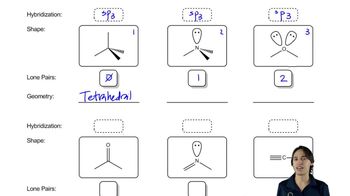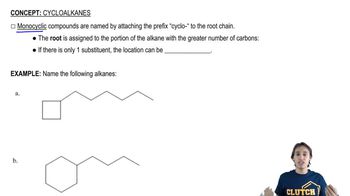Textbook Question
1. Draw the structure of cis-CH3CH=CHCH2CH3 showing the pi bond with its proper geometry.2. Draw the trans isomer, and circle the coplanar atoms. Are there still six?
 Verified step by step guidance
Verified step by step guidance Verified video answer for a similar problem:
Verified video answer for a similar problem:



 4:28m
4:28mMaster How to name different types of double bonds or rings with a bite sized video explanation from Johnny
Start learning